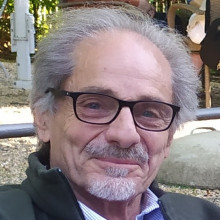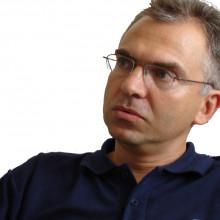Position Description
Φωτονικά Μεταϋλικά και Διατάξεις
Required Qualifications
Οι υποψήφιοι για την παραπάνω θέση πρέπει:
α) Να είναι κάτοχοι διδακτορικού διπλώματος
β) Να έχουν τα προσόντα που ορίζονται στο άρθρο 18, παρ. 2 του Ν. 4310/2014 όπως αυτό αντικαταστάθηκε από το άρθρο 16 του Ν. 4386/2016, ήτοι να είναι επιστήμονες υψηλής επιστημονικής εμπειρίας και κατάρτισης, κάτοχοι διδακτορικού διπλώματος, που εργάζονται αυτοτελώς και ανεξάρτητα για την παραγωγή ή βελτίωση γνώσεων και την εφαρμογή τους, για παραγωγή προϊόντων, διατάξεων, διαδικασιών, μεθόδων και συστημάτων.
Για τη Β’ βαθμίδα τα ελάχιστα προσόντα που απαιτούνται είναι:
- να έχουν τεκμηριωμένη ικανότητα να διευθύνουν προγράμματα έρευνας και τεχνολογικής ανάπτυξης, να συντονίζουν και να κατευθύνουν την έρευνα και την τεχνολογική ανάπτυξη στα επί μέρους έργα του προγράμματος έρευνας και τεχνολογικής ανάπτυξης, να αναζητούν και να προσελκύουν οικονομικούς πόρους από εξωτερικές πηγές για τη χρηματοδότηση των δραστηριοτήτων του ινστιτούτου ή του κέντρου και να προωθούν πρωτοποριακές ιδέες στην επιστήμη και την τεχνολογία. Να έχουν πρωτότυπες δημοσιεύσεις σε επιστημονικά και τεχνικά περιοδικά διεθνώς αναγνωρισμένου κύρους ή να έχουν διεθνή διπλώματα ευρεσιτεχνίας και να έχουν προσφέρει στην πρόοδο της επιστήμης και της τεχνολογίας και των εφαρμογών τους και η συμβολή τους στην πρόοδο της επιστήμης και της τεχνολογίας να έχει τύχει αναγνώρισης από άλλους ερευνητές.
γ) Να είναι Έλληνες πολίτες ή πολίτες των κρατών της Ευρωπαϊκής Ένωσης. Για τους πολίτες των κρατών της Ευρωπαϊκής Ένωσης απαιτείται η άριστη γνώση της Ελληνικής γλώσσας, η οποία αποδεικνύεται με τίτλο σπουδών Ελληνικού εκπαιδευτικού ιδρύματος τριτοβάθμιας εκπαίδευσης ή απολυτήριο τίτλο Ελληνικού Λυκείου ή εξαταξίου Γυμνασίου ή Πιστοποιητικό Ελληνομάθειας του Κέντρου Ελληνικής Γλώσσας, ή με αντίστοιχο Πιστοποιητικό του Σχολείου της Νέας Ελληνικής Γλώσσας του Αριστοτελείου Πανεπιστημίου Θεσσαλονίκης, το οποίο χορηγείται ύστερα από σχετική εξέταση των υποψηφίων.
δ) Να μην υπάρχει στο πρόσωπό τους κώλυμα από ποινική καταδίκη ή υποδικία ή απαγόρευση ή δικαστική αντίληψη
ε) Οι άνδρες υποψήφιοι να έχουν εκπληρώσει τις στρατιωτικές τους υποχρεώσεις ή να έχουν νόμιμα απαλλαγεί από αυτές.
Application Procedure
Οι υποψήφιοι θα πρέπει απαραίτητα να υποβάλουν:
- Αίτηση υποψηφιότητας στην οποία ο/η ενδιαφερόμενος/η θα ζητεί να γίνει δεκτή η υποψηφιότητά του/της και θα αναφέρει τα συνυποβαλλόμενα δικαιολογητικά.
- Λεπτομερές βιογραφικό σημείωμα (στα ελληνικά και αγγλικά) και ανάτυπα δημοσιεύσεων.
- Περιληπτική έκθεση ερευνητικών δραστηριοτήτων και μελλοντικών σχεδίων (στα αγγλικά).
- Τρία (3) ονόματα ερευνητών/καθηγητών (πλήρη στοιχεία και διεύθυνση ηλεκτρονικού ταχυδρομείου), από τους οποίους θα μπορούν να ζητηθούν συστατικές επιστολές.
- Αντίγραφα τίτλων σπουδών της ημεδαπής ή αλλοδαπής, τα οποία σε περίπτωση διορισμού θα πρέπει να υποβληθούν και επικυρωμένα. Εφόσον πρόκειται για τίτλους σπουδών από ιδρύματα της αλλοδαπής, οι υποψήφιοι υποχρεούνται να προσκομίσουν πιστοποιητικό αναγνώρισης από το ΔΟΑΤΑΠ (πρώην ΔΙΚΑΤΣΑ) κατά την υποβολή των ανωτέρω δικαιολογητικών ή εναλλακτικά κατά τον διορισμό.
- Αναλυτικό υπόμνημα για το δημοσιευμένο τους έργο σε επιστημονικά περιοδικά (στα αγγλικά).
- Υπεύθυνη Δήλωση του 1599/86 που να δηλώνεται από τους υποψηφίους ότι πληρούν τα απαιτούμενα τυπικά προσόντα της παρούσας Προκήρυξης.
Appointment Duration
ΑΟΡΙΣΤΟΥPosition Description
Οπτικές μη γραμμικές ιδιότητες και χρονική εξέλιξη, γραφενικών παραγώγων
Για το πλήρες κείμενο της πρόσκλησης ακολουθήστε τον σύνδεσμο "Related Documents" αριστερά
Required Qualifications
- Πτυχίο στις Φυσικές Επιστήμες ή Επιστήμης Υλικών
- Μεταπτυχιακός τίτλος σπουδών στην Φωτονική
- Εργαστηριακή εμπειρία στην μη γραμμική οπτική
- Γνώση της αγγλικής γλώσσας
Application Procedure
Στον φάκελο υποβολής της πρότασης θα πρέπει να εμπεριέχονται τα ακόλουθα:
- Αίτηση (Form Greek στην αριστερή στήλη) με αναφορά στον κωδικό και στο πρόγραμμα της θέσης
- Αναλυτικό Βιογραφικό Σημείωμα
- Ευκρινή φωτοαντίγραφα τίτλων σπουδών
- Πρόσφατη βεβαίωση σπουδών υποψήφιου διδάκτορα
Appointment Duration
5 μήνεςA National facility of the European RI ecosystem
The HELLAS-CH is a cross-disciplinary National Research Infrastructure (NRI), which offers access to a) advanced experimental facilities for state-of-the-art research on laser science, technology and applications, and b) versatile integrated tools and technologies for addressing demanding research challenges in the field of Heritage Science (HS).
Objectives of HELLAS-CH
- Capitalize major scientific achievements in the country, making essential experimental resources available to prominent researchers in Greece.
- Integrate the new generation of brilliant researchers into the vibrant academic environment of FORTH and identify leaders to extend the frontiers in the science and technology of light (Photonics).
- Offer a number of top level resources and infrastructures along with related competences that will enable scientists to pursue cutting-edge research in the fields of Physics, Chemistry, Biology, Medicine, Informatics, Applied Mathematics, Geophysics, Photonics and Micro/Nano-Engineering.
- Shed light on not yet revealed aspects of the universal cultural heritage through new findings and tools, such as satellites interacting with underwater antiquities and new light sensors opening up novel channels towards the knowledge/understanding of our past.
To: 04/12/2019 14:00
Polymers have been extensively used during the past years in pharmaceutical technology as excipients and pill coatings. They consist of mainly natural polymers such as cellulose, starch and chitosan to a smaller extent. Synthetic polymers such as poly(ethylene glycol), poly(vinyl pyrrolidone), poly(acrylic acids) and their esters, biopolymers, polyesters like poly(lactic acid, polyhydroxyalkanoates, copolymers and modified natural polymers were also used lately as drug delivery carriers. The use of these polymers aims the increase of the solubility of insoluble drugs and the production of innovative formulations for drug targeted and controlled release formulations. Most of them are used in the form of nanoparticles such as nanospheres, while new systems like liposomes, dendrimers and polymeric hydrogels have been extensively studied. This is because polymers have many advantages compared to other used materials. For example, they have lower density, can be easily formed into any shape, exhibit chemical and biological stability, have good mechanical properties and some of them are easily hydrolyzed and eliminated by the body after performing their role. Also, thermosensitive and pH sensitive polymers have been widely explored.
Continuous evolution allows developing more sophisticated and complex drug delivery systems designed not only to deliver the drug to defined and pre-selected parts of the human body, but also to interact with the body’s environment and to respond on its changes. Based on the above, it becomes clear that today the contribution of polymers to overcoming chronic problems and to treating diseases is crucial and it can be said that they have contributed significantly to the increase in life expectancy.





